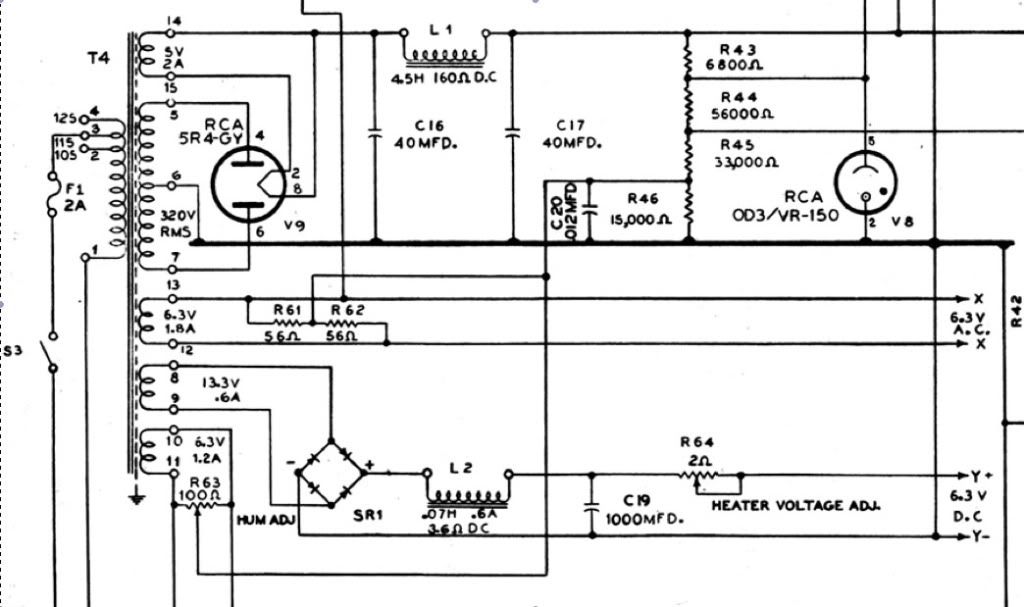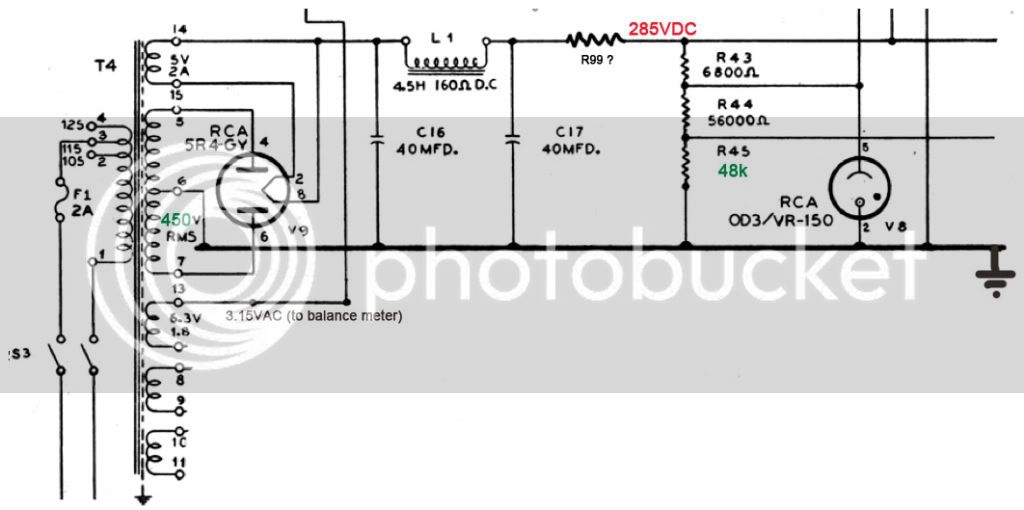letterbeacon
Well-known member
I've yet to completely finish my BA-2 pre amp, but seeing as I'm in my home town for Christmas and physically far away from the unit, I thought I'd turn my attention to theory behind my next project - the RCA BA-6A. I have the vintage input and output transformers for this unit (thanks to emrr) so I'm very keen to pursue this!
I've managed to glean a lot of knowledge and information from DaveP's brilliant thread, but I'm doing a couple of things differently to Dave (a tube power supply for one thing) and I would appreciate some advice from my learned friends on the board.
Firstly, the power supply. I've changed it slightly because I'm going to be using a Hammond PT which has a different output to the original one used. The Hammond has a slightly higher output so I'm planning to use a dropping resistor (R99 on my new schematic) to get to the original spec of 285VDC. Trouble is, I'm not sure how to figure out what this value should be. Ohm's Law should do it, but I can't seem to work out which combination of numbers I need to feed into the equation.
Other alterations I've made to the power supply are:
- Removed both 6.5VAC taps as I'm going to use 6.3VDC from another transformer (6.3VDC transformer and power supply not shown) to feed all my heaters, and the meter lamp.
- Removed C20 and R46 as I think they're to do with the hum adjust on one of the 6.3VAC taps. Is that correct?
- Increased R45 to 48k to make up for the R46 I've removed.
- Now using a DPDT switch for the power switch.
I'd really appreciate it if someone could look over my revised schematic and tell me if I need to change it some more. I also would appreciate it if someone could tell me how I could work out what the value of R99 should be in my revised schematic.
Original power supply section:

My revised versions:

This is the original supply
I've managed to glean a lot of knowledge and information from DaveP's brilliant thread, but I'm doing a couple of things differently to Dave (a tube power supply for one thing) and I would appreciate some advice from my learned friends on the board.
Firstly, the power supply. I've changed it slightly because I'm going to be using a Hammond PT which has a different output to the original one used. The Hammond has a slightly higher output so I'm planning to use a dropping resistor (R99 on my new schematic) to get to the original spec of 285VDC. Trouble is, I'm not sure how to figure out what this value should be. Ohm's Law should do it, but I can't seem to work out which combination of numbers I need to feed into the equation.
Other alterations I've made to the power supply are:
- Removed both 6.5VAC taps as I'm going to use 6.3VDC from another transformer (6.3VDC transformer and power supply not shown) to feed all my heaters, and the meter lamp.
- Removed C20 and R46 as I think they're to do with the hum adjust on one of the 6.3VAC taps. Is that correct?
- Increased R45 to 48k to make up for the R46 I've removed.
- Now using a DPDT switch for the power switch.
I'd really appreciate it if someone could look over my revised schematic and tell me if I need to change it some more. I also would appreciate it if someone could tell me how I could work out what the value of R99 should be in my revised schematic.
Original power supply section:

My revised versions:

This is the original supply






